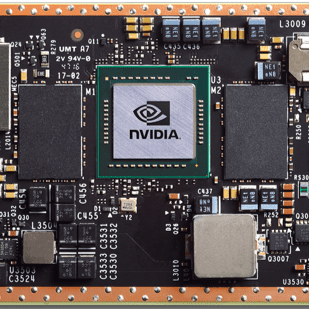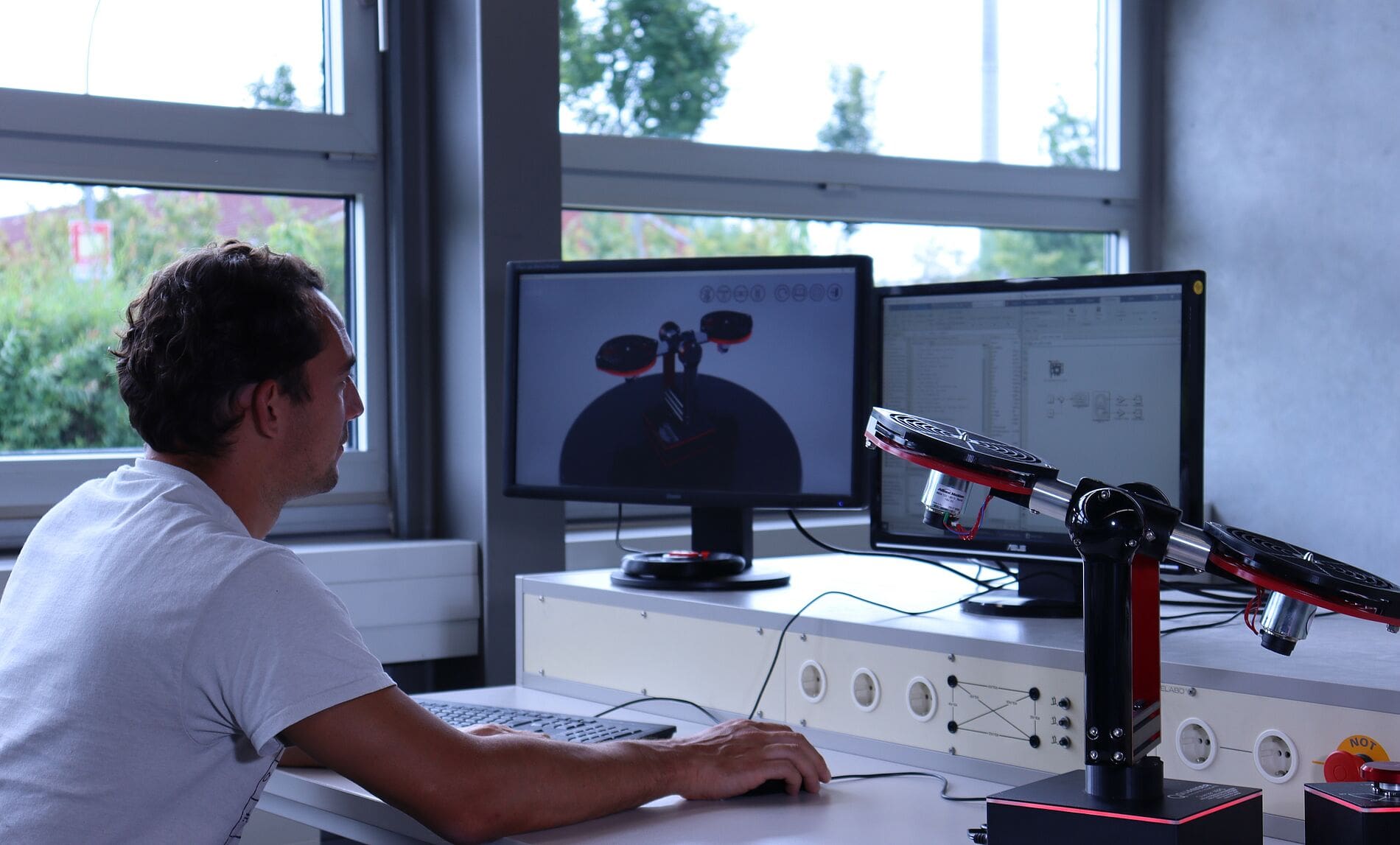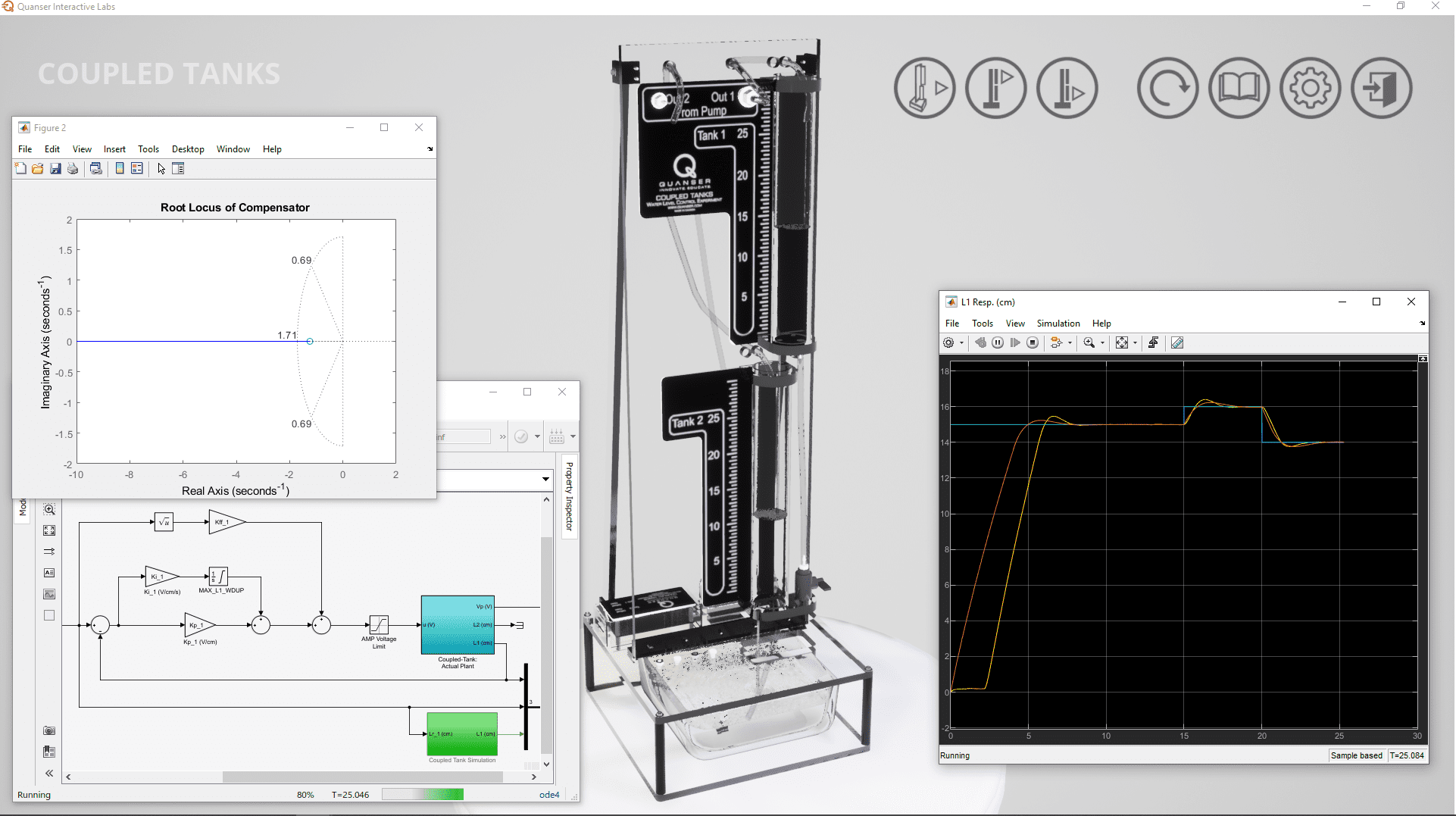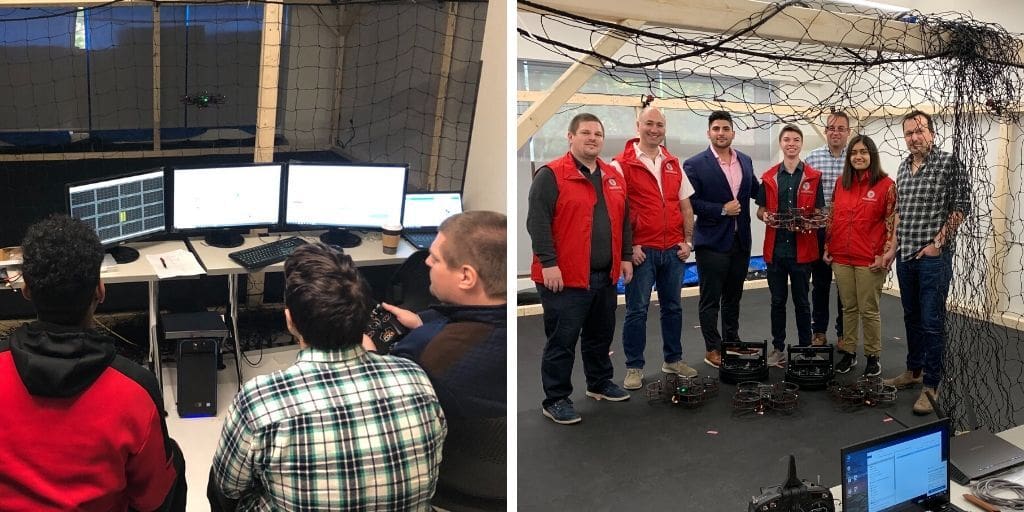
Throughout history, it’s not just big thinkers who make a mark, but also the tools they use. Galileo’s telescope, Gutenberg’s printing press, and the internet all transformed their fields.
Archimedes showed us the power of the right tools when he said a lever could move the earth. Today, in education and technology, the Quanser Platform is like Archimedes’ lever. It’s a complete package for universities, helping with research, teaching, project-based learning, and community outreach to inspire students.
Dr. Tolga Kaya, a prominent researcher, used the right tools to quickly build a high-quality ECE program at Sacred Heart University (SHU). Despite not having a direct background in robotics or control systems, his creativity and passion allowed him to shape an innovative program.
Using the Quanser platform, Dr. Kaya has developed an ECE program full of hands-on activities, engaging projects, and the latest technology. This program goes beyond studying; it excites young people about STEM, helps the community, and prepares students for real engineering challenges.
1. Challenges and Uniqueness of Running a High-Quality ECE Program
Starting a high-tech program in a field like ECE always presents numerous challenges and unique circumstances. Large projects come with significant costs and require hard work and smart decisions. Let’s hear from Dr. Tolga Kaya about his journey:
“In 2016, I took on the role of leading and developing the Electrical and Computer Engineering programs at Sacred Heart University.
It was an exciting and challenging task to bridge tradition with innovation.
Our goal was to create a program that would teach the fundamental principles of engineering while staying current with the rapidly changing tech landscape—a program that could hold its own against hundreds of established programs across the country with decades of experience.
From the start, we knew that hands-on, project-based learning had to be at the core of our programs. We aimed to create an environment that would allow students to connect theoretical knowledge with practical skills. This meant building a platform that carefully integrated both software and hardware.
We’ve been developing our curriculum for the engineering program at Sacred Heart University, where computer science has a longer history. Therefore, C was the first language adopted for practice. But as our program grew, so did our repertoire of languages, and we introduced Python as the foundational language for our budding engineers.
Yet, MATLAB has become the cornerstone of our curriculum. It’s where computational algorithms, embedded systems, signals, audio, and video processing transform from concepts into tangible skills.
For building our lab platform, we incorporated Elegoo smart robot car kits and our drones. We also used Arduino and Raspberry Pi extensively. Then we faced the question: Do we develop our own platform or adopt an established one? We needed a platform that would let us develop our projects and also work seamlessly with MATLAB and Python.
That’s when we discovered Quanser. It was love at first sight when I saw their setup at the ECEDHA conference in 2018. It was also timely, as we were building our lab then. Getting familiar with Quanser’s major equipment was fortunate for us—it really came at the right time.”
Key Challenges and Unique Needs
- Bridging Tradition with Innovation: Creating a program that teaches fundamental principles while staying current with technology.
- Hands-on, Project-based Learning: Integrating practical skills with theoretical knowledge.
- Curriculum Development: Adopting C and Python as foundational languages, with MATLAB as a core component.
- Building a Lab Platform: Deciding between developing an in-house platform or adopting an established one.
- Seamless Integration: Ensuring the chosen platform works well with existing tools like MATLAB and Python.
2. Adopting Lab Solutions Using a Control Systems Approach
Professor Ayse Tekes, a Mechanical Engineering faculty at Kennesaw State University, presented this insightful diagram during the “YOUser Webinar | Reinforcing Student Learning of Control Theory Using Quanser Servo and QUBE.” It captures every aspect of adopting and utilizing lab equipment through a feedback control analogy, highlighting the dynamic nature of this process.

Adopting a new solution involves careful preparation, testing, creating detailed handouts, and ongoing customization based on the students’ needs and goals. Is it easy? Yes, but it does require time, resources, experience, and internal expertise to continuously measure and refine the outcomes to achieve the desired results. These elements might not be readily available for a new program. So, why reinvent the wheel and risk losing valuable time and competitive edge?
Let’s look at how Quanser and Sacred Heart University collaborated through a feedback loop to customize their program, creating a turnkey solution that is course-ready, project-ready, outreach-ready, and research-ready.
2.1. Solution and Labs
Acquisition and Setup: “We acquired the Autonomous Vehicle Research Studio (AVRS), complete with 4 QDrones, 4 QBots, and 2 Aeros, along with virtual twins and comprehensive courseware. This package included teaching content, research examples, and project-based learning materials. Arman and Arian from Quanser were crucial in helping us set everything up. Our ambitious goal was to bring all lab classes together under one roof.”
Expansion: “With Quanser’s guidance, we established the AVRS lab, and that was just the start. We went on to add the Self-Driving Car Studio to our burgeoning Smart City project.”
Comprehensive Lab: “Our Comprehensive Lab now houses Aero, QBot, QDrone, and QCar side by side, adjacent to our classrooms. It’s a bit tight, but this proximity is the cradle of creativity. Having all elements of our program in one dynamic space is truly remarkable. We also gained access to Quanser’s course curriculum, research materials, projects, and examples.”
2.2. Feedback Loop and Adjustment
Instructors’ content, courseware, and assessment samples provided by Quanser acts like controllers and sensors in the Control Systems Approach to lab adoption. Dr. Tolga explains how they customized and adjusted lab solutions based on student outcomes and course requirements, with Quanser’s help, to achieve the desired results.
Comprehensive Support: “It wasn’t smooth sailing. Once Arman and Arian left, we hit a wall—our know-how left with them, and suddenly everything they had made clear turned into puzzled looks between me, the faculty, and the students. Our students were just beginning with MATLAB, and Simulink was a distant memory for me, something I hadn’t touched in 20 years. We lacked experience and the momentum usually provided by senior students—we had none. We were a group of novices, struggling to harness the full potential of our new systems.”
Advanced Consulting: “Quanser’s support was much more than just technical guidance; they really helped us in every way. In our training sessions, they went above and beyond what normal support would do. They acted like teachers, academic assistants, and consultants for our team.”
Customized Training: “In this meeting, Arman, Gilbert, and John from Quanser are giving Michael and Caitlin a hand with mapping and localization for ground robots. We realized we needed more than just a quick fix, so we reached out to Quanser again for some in-depth troubleshooting and technical consultation.”
Workshops and Certifications: “We knew that our undergraduate students needed extra help and training to work with the Quanser systems. So, Quanser stepped up and offered us exceptional support by designing and conducting 10 training workshops! This led to a great idea: we already had a solid partnership with Credly at the university, so we worked with Quanser to design three certificates. These certificates are not just for learning; students can also add them to their resumes and LinkedIn profiles, showcasing valuable skills. With Quanser’s help, we integrated these certificates into our Learning Management System too!”
3. The outcome was what every program is looking for.
3.1. Undergraduate Students Publish Papers on Autonomous Systems and Applied AI
“Our undergraduate students work on advanced Capstone Projects that often lead to the publication of international papers:
We created a Capstone Project using the Quanser System, aiming to collaborate with companies. Two undergraduate computer engineering students, Gabriel and Elijah, took on a project involving aerial vehicles.
They programmed a QDrone to recognize an April tag marker and land accurately on a target spot. They wrote a paper on this project and presented it at an international conference, which was a thrilling achievement and a wonderful experience for both the students and us.
We’ve now formed our research team, initially focusing on ground robots. As they progress, they will shift their attention to autonomous vehicle research, utilizing the QDrone, and eventually moving on to the QCar and smart city applications. The team is starting with drones as they build up to more complex projects.”
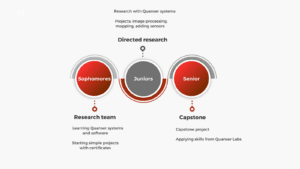
3.2. Developing Our Own Hans-On and Project Base Learning Platform on Quanser Systems for Undergraduate Students
“Sophomores are invited to join the Quanser research team, where they begin by familiarizing themselves with the Quanser systems, ecosystem, and software. They start with simple projects, using the knowledge and certificates they’ve earned.”
“In their junior year, students are required to take a class called “Directed Research in Engineering” during the spring semester. This core part of their curriculum involves using Quanser systems for research, which might include image processing, mapping and localization, or adding more sensors and electronics, depending on their interests and project needs.”
“By their senior year, students engage in a Capstone project, applying all the skills and knowledge they’ve acquired over their time working with the Quanser platform.”
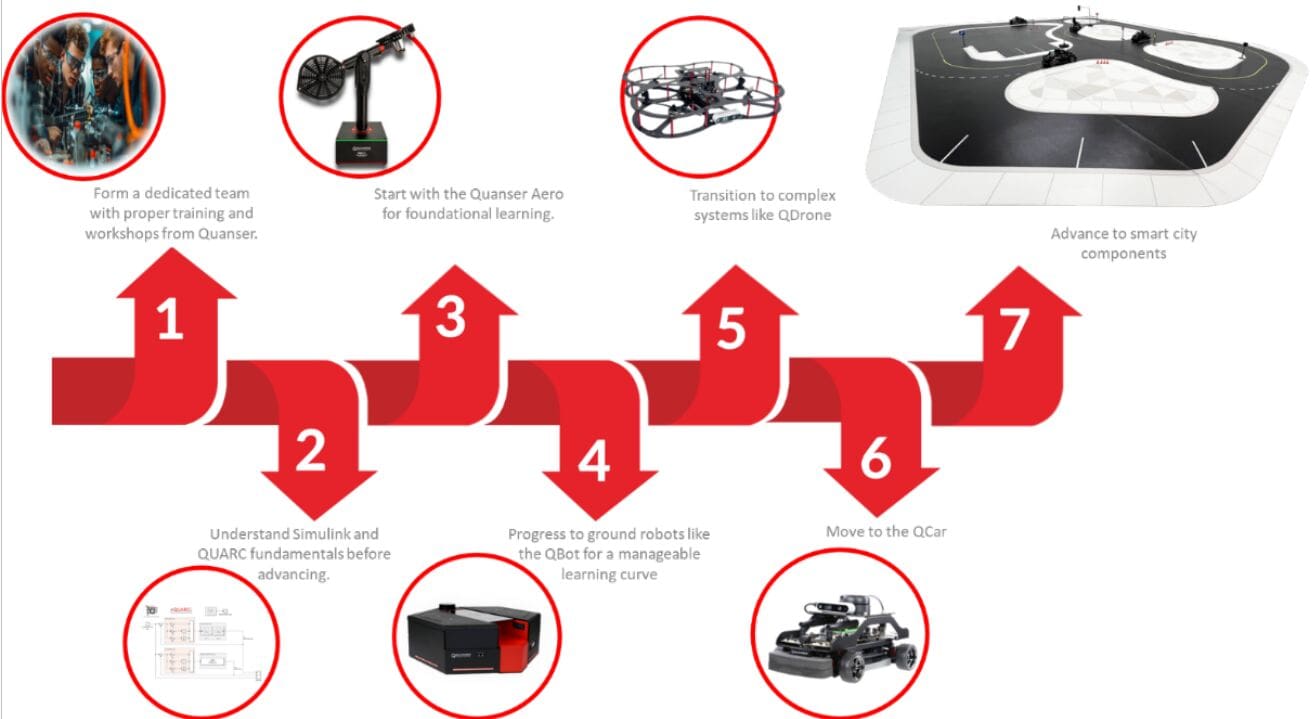
4. Suggested Quanser Progression: From Fundamentals to Mastery
For universities and programs considering adopting Quanser products, I would like to share some advice based on our experience. If I were to start over with the Quanser system, my approach to tackling the challenges would be quite different.
Firstly, I’d form a dedicated team from the outset, ensuring that members receive proper training and workshops with Quanser at the very beginning. It’s crucial to understand the fundamentals of Simulink and how QUARC, Quanser’s real-time software, functions before delving into the complexities of the larger systems.
I would recommend beginning with the Quanser Aero. We initially started with the QDrone, which, while advanced, introduced us to an overwhelming array of communication protocols and networking issues. The Aero is simpler and provides a strong foundational understanding of the principles at play.
Once a solid grasp of the Aero is achieved, I would then suggest moving to ground robots like the QBot, which operates on a 2D system. This progression builds confidence and understanding in a more manageable, staggered fashion. From there, transitioning to the 3D system with the QDrone, and finally to the QCar and the smart city component, would be the next steps.
It’s about layering the knowledge, taking it step by step, instead of trying to leap directly to the most complex aspects. This gradual learning process can help prevent being overwhelmed and ensures a solid grounding in each stage of the technology.
5. Conclusion
In conclusion, the Quanser platform has been a game-changer in developing a modern and competitive ECE program at Sacred Heart University. Dr. Tolga Kaya’s strategic planning and use of advanced tools have created a hands-on, project-based learning approach that enriches students’ educational experiences and prepares them for real-world engineering challenges.
This journey highlights the transformative power of the right educational tools, similar to historical innovations like Galileo’s telescope and Gutenberg’s printing press.
To learn more, we invite you to listen to the YOUser webinar hosted by Dr. Tolga Kaya. We also encourage programs to adopt similar engineering platforms and, with Quanser’s support, develop their own programs based on a Control Systems Approach.
For more information, please reach out to Morteza.Mohammadi@Quanser.com .
